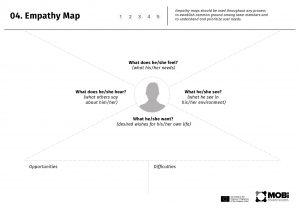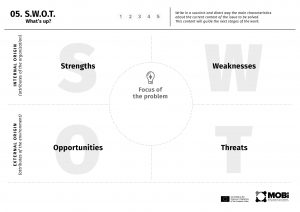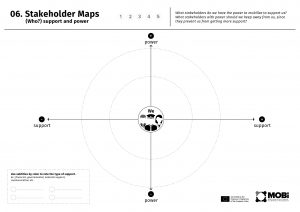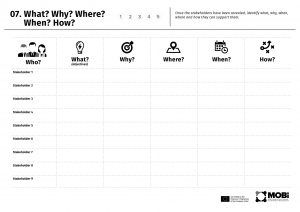German Report – Wahrnehmung europäischer Straftäter bezüglich der gesellschaftlichen Akzeptanz des
Wiedereingliederungsprozesses
Definition: a technique of information visualization that organizes keywords about the problem using different sizes or colors according to level of relevance. For this, Word Cloud serves a function akin to a table of contents for a book and “can serve as a gateway to understanding deep, rich qualitative, text-based data” (MARTIN and HANINGTON, 2012, p.206)
Objectives: identify problems, facilitate the understanding of data, facilitate data communication, problems and solutions to stakeholders, guide decision processes.


Definition: a mix of two techniques – Thematic Network and Tree of Problems – which aims to identify key words in relation to some question, as well as its causes and consequences. This technique “can help to systematically break down texts into simpler, manageable clusters of patterns and themes, and then help you to explore relationships between themes so that the most unifying message can be visualized” (MARTIN and HANINGTON, 2012, p.178).
The technique can help to define in which of the branches (of the “tree”) will be the main focus to work on, if it is not possible in a community engagement process to act on all the causes / effects of a problem.
Objectives: analyse and synthesize information, organize factors related to a problem, facilitate the understanding of data, identify problems, causes and consequences.

Definition: an immersive technique of observation and interview that reveals what is underlying (and invisible) about some question. Contextual research should be done in the context of the person participating in the survey, at the moment he is doing his action, how working, using a certain service, performing some activities related to the question investigated. The transfer of knowledge about work structure happens more reliably when people talk about how they work while they do the work. As a result, the research data reliably reflects reality. This technique helps to understand what the impact and influence of culture on the job, and also the impact and influence of the physical environment on the job (MARTIN and HANINGTON, 2012, p.46).
The technique can also be used at the end of a community engagement process in order to evaluate the impacts of the developed solution (phase 5).
Objectives: explore the context, identify problems, and develop empathy.
Definition: a map to be analysed from the point of view of the users, from four questions: what does he/she feel? (about his/her needs); what does he/she see? (about his/her environment); what does he/she hear? (about other say about him/her); and what does he/she want? (about desired wishes for his/her). After answering the fourth questions, it is proposed to identify problems and difficulties in relation to the context of the users regarding the question to be investigated.
Empathy maps should be used throughout any process to establish common ground among team members and to understand and prioritize user needs.
Objectives: develop empathy, explore the context, identify problems, needs and opportunities.

Definition: a very widespread technique mainly in business, aims to identify and the main characteristics about the current context of the issue to be solved, to guide the next stages of the work. The analysis is based on responses to four factors: strengths (S), weaknesses (W), opportunities (O) and threads (T). As an example, there are some questions that can be asked within each of the four factors (EDRAW, 2018):
Objectives: explore the context, identify problems, needs and opportunities, analyse and synthesize information.

Definition: a technique adapted that help to visually consolidate and communicate the key constituents of a project. “As well as identifying end users, it is critical to include people who will benefit from the project, those who hold power, those who may be adversely affected, and even those who may thwart or sabotage designed outcomes or services” (MARTIN and HANINGTON, 2012, p.166).
In our model, the Stakeholder Maps, proposes to identify within a map of polarities power vs. support issues such as: what stakeholders do we have the power to mobilize to support us? Or, what stakeholders with power should we keep away from us, since they prevent us from getting more support?
In addition, different colours can be used to identify the types of stakeholder support indicated on the map, such as financial, governmental, material support, communication etc.
Objectives: explore the context, identify stakeholders, opportunities, needs.

Definition: once the stakeholders have been revealed, identify what, why, when, where and how they can support them. The technique created is a step beyond the map of the stakeholders, because it aims to identify within the five questions. Firstly, about what each of the stakeholders can help, already helps or should not do; why they would be interested in being involved or what the main reason for involving them; where they are or where they should be inserted; when they should be involved in the project in question; and finally how they can be involved or how they can help solve the identified problem. In this sense, when revealing the how, it can be said that the technique already begins to sketch some possible solutions to the problem from the identified stakeholders.
Objectives: explore the context, identify opportunities and needs, synthesize information.

